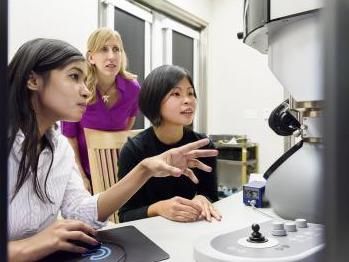The beginning of a new era in resolution
World record: Team of researchers has succeeded in achieving the world's highest electron microscope resolution to date
Advertisement
Scientists at Cornell University (USA) have succeeded in building an electron microscope pixel array detector (EMPAD) with sophisticated 3D reconstruction algorithms that make it possible to multiply the resolution of a state-of-the-art electron microscope. The Leibniz-Institut für Kristallzüchtung provided the decisive material for this world record, which was set using a high-performance detector.

Symbolic image
pixabay.com/Unsplash
Cornell University research group leader David Muller emphasises that this marks the beginning of a new era in resolution. Not only has an entry been made in the Guinness Book of Records, but this method opens up a whole new range of measurement possibilities for things that researchers have long wanted to do. "We basically can now figure out where the atoms are in a very easy way. It also solves a long-standing problem that has prevented us from doing so in the past - the cancellation of multiple scattering of the beam in the sample, as outlined by Hans Bethe in 1928," Muller said.
The crucial material for developing this method was grown at the IKZ and made available to the researchers. The crystalline material praseodymium orthoscandate (PrScO3) is characterised in particular by a small distance between the praseodymium atoms (only 59 pm), so that the resolution can be well demonstrated on these "praseodymium pairs". In other words, the resolution must be better than 59 pm if both atoms can be detected. On the other hand, praseodymium is a very heavy atom (140.9 u), which in turn leads to a particularly good resolution, because heavy atoms "vibrate" less in space. In addition, the weight of scandium is in the middle (44.9 u) and oxygen is very light (15.9 u), so that with these three types of atoms one can already make many indications about the usefulness of the method for other elements in the periodic table. Worldwide, the IKZ is the only research institute that can grow the material with the required purity and perfection.



























































